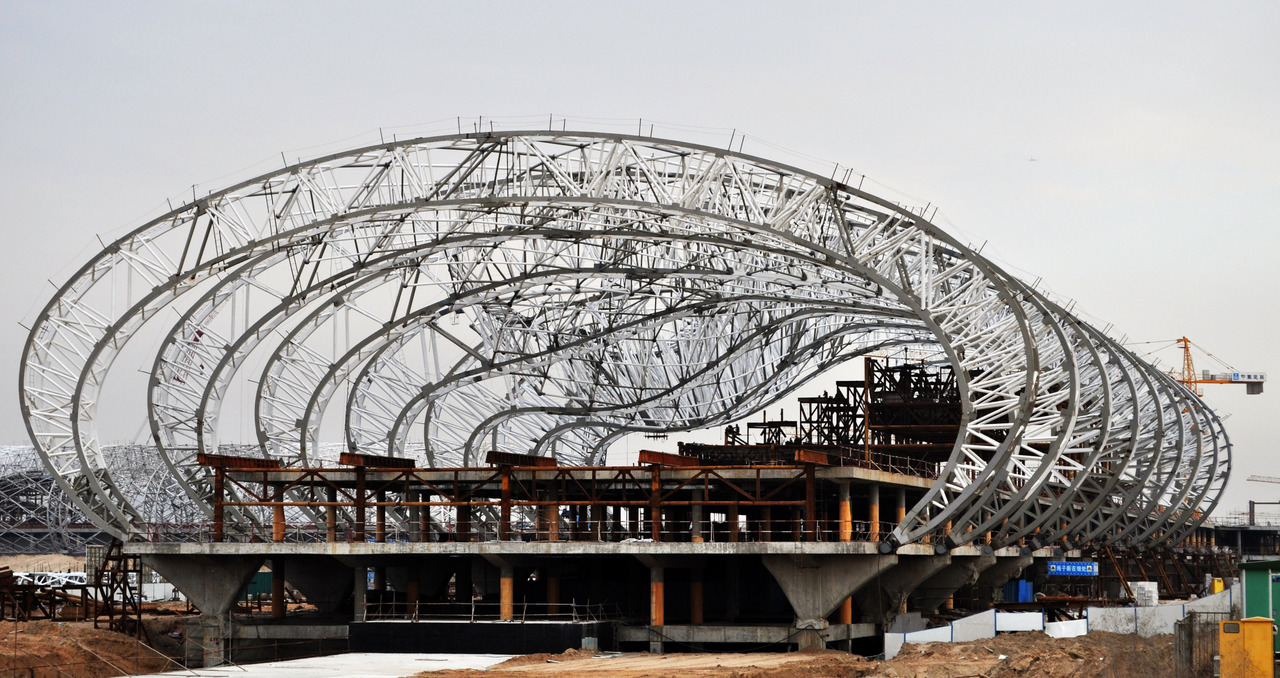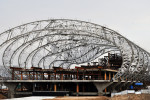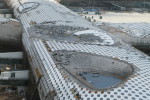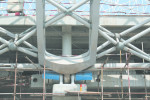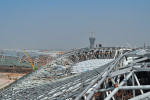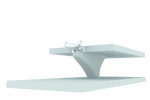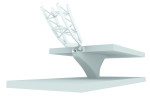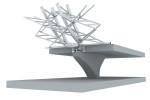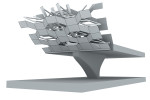The airport can be divided into two main structural parts: the hall and the concourses. The hall is composed of a roof supported by circular steel columns (the inverted truncated section is created with an external sheeting) set in the concrete base with a 25 height and a 36 m distance. The columns support a bi-direction reticular frame with tubular profile of variable height between 3 and 4-5 m. The concourse has instead been created with a shell-like reticular structure, with a height between 3 and 6 m, which rests on the concrete base for a length of 1.350 m with a cross span between 45 and 63 m; at mid length the intersection with the side wings of the airport created the "urban square" with a 80 m free span.
One the main objectives of the structural design was to conceal as much as possible the structure itself with regards to the final impact of the envelop. Therefore the structure chosen for the envelop is a reticular frame with the main axis in a diagonal direction in relation to the main direction of the structure: this in order to limit as much as possible the visual obstructions with the honey-comb cells. However this solution is not ideal because it doesn't allow the direct transfer.
Therefore the installation of cross elements was needed: a series of twin portals (2 m apart and with a distance of 18 m) placed between the two layers of the envelop.
Leggi anche:
Shenzhen Bao’an International airport in Guangdong, China
Shenzhen Bao’an International airport, China – Focus envelop


